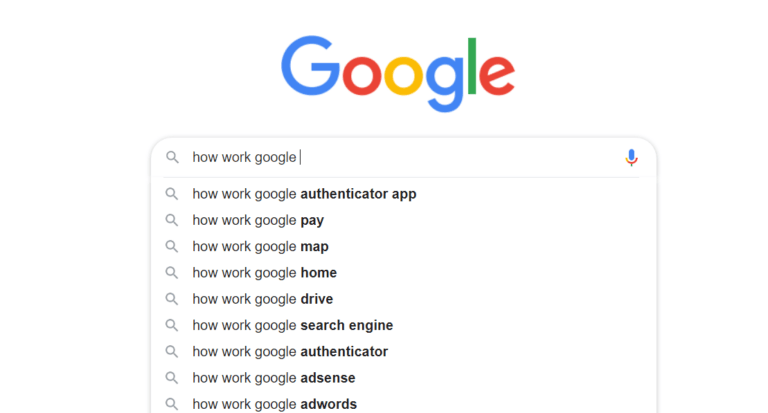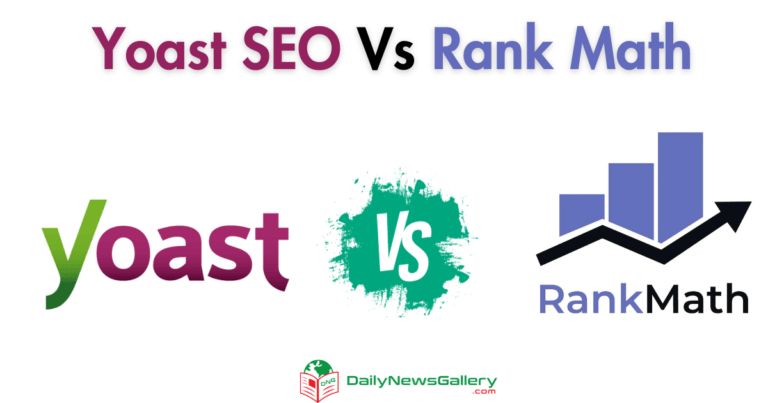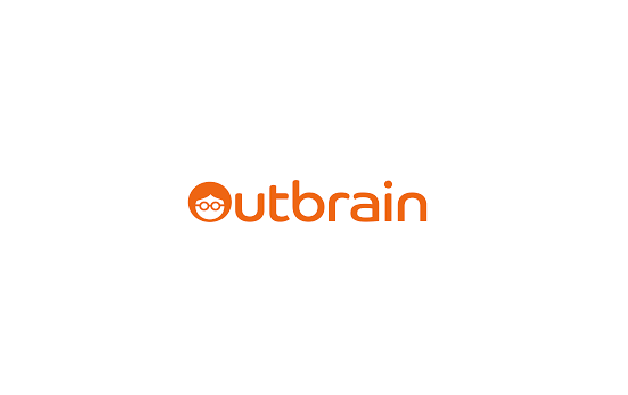
Native ads are a form of paid media where the ad experience follows the natural form and function of the user experience in which it is placed. Unlike display ads or banner ads, native ads don’t really look like ads. They look like part of the editorial flow of the page. The key to Native Ads is that it is non-disruptive; it exposes the reader to advertising content without sticking out like a sore thumb.
What are Native Ads?
Native Ads refers to a type of online advertising that seamlessly blends with the content of a website or platform, appearing as a natural part of the user’s experience. Unlike traditional display ads, native ads are designed to match the look, feel, and context of the platform on which they are placed. They are often labeled as “sponsored” or “recommended” content, ensuring transparency for the audience. Native ads can take various forms, such as articles, videos, infographics, or even social media posts, and are intended to provide value to the user while promoting a specific product or service.
Types of Native Ads Formats:
Native Ads offers a wide range of formats, allowing marketers to choose the most suitable option for their campaign objectives. Some common Native Ads formats include:
In-Feed Ads: In-feed ads are native ads that appear within the natural flow of content on a website or social media platform. They blend seamlessly with the surrounding articles, videos, or social media posts, often appearing as sponsored content or recommended articles.
Content Recommendation Widgets: Content recommendation widgets are typically found at the end of articles or blog posts, suggesting related content that the user might find interesting. These widgets often include native ads, promoting relevant products or services that align with the user’s interests.
Promoted Listings: Promoted listings are native ads commonly found on e-commerce platforms or online marketplaces. They appear alongside organic search results, showcasing products or services that are relevant to the user’s search query.
Understanding How Native Ads Work
Native advertising is a type of online marketing in which the ad experience follows the natural form and function of the user experience it is placed within. This could be a promoted post on social media, content recommended by a content discovery platform, or a video in an online article.
The key element of native ads is that they don’t look or feel like traditional ads. Instead, they blend seamlessly with the content around them, making them less intrusive and more engaging for the user. This is a stark contrast to banner ads and pop-ups, which can be disruptive and annoying.
The way native ads work depends on the platform they’re hosted on. For example, on social media, native ads might take the form of sponsored posts that appear in your feed. On a news website, they might appear as recommended articles or videos. Regardless of the format, the key is that native ads match the look and feel of the platform they’re on.
The Importance of Native Ads in Digital Marketing
In the ever-evolving landscape of digital marketing, native ads have emerged as a powerful tool. They are essential because they provide a more seamless and less intrusive ad experience for users, which can result in higher engagement and conversion rates.
Native ads can also help brands build trust and credibility with their audience. Because they blend in with the surrounding content, users may not immediately recognize them as ads. This allows brands to provide value and build relationships with their audience, without the hard sell that can often come with traditional advertising methods.
Moreover, native ads are mobile-friendly, which is crucial in today’s mobile-first world. They are designed to fit seamlessly within the content, regardless of the device or screen size. This means they can reach users wherever they are, on whatever device they are using, providing a consistent and engaging experience.
Benefits of Native Ads
Now that you understand what native ads are and why they are important, let’s delve deeper into the benefits of native ads. One of the primary benefits of native ads is that they are highly effective at driving user engagement. Because they blend in with the content, users are more likely to engage with them.
Furthermore, native ads can help increase brand awareness and recall. Unlike traditional ads, which can be easily ignored or forgotten, native ads are part of the content that the user is actively engaged with. This means the user is more likely to remember the brand and the message.
Native ads also offer superior targeting options. You can target your ads based on the user’s behavior, interests, location, and more. This enables you to reach the right people, at the right time, with the right message, increasing the chances of conversion.
How to Effectively Use Native Ads
Successfully using native ads requires a clear understanding of your audience, a well-defined strategy, and careful monitoring and optimization. Start by defining your target audience and understanding their behaviors and interests. This will help you create ads that are relevant and engaging.
Next, define your goals and KPIs. What do you want to achieve with your native ads? Are you looking to increase brand awareness, drive traffic to your website, or generate leads or sales? Once you have clear goals, you can create a strategy to achieve them.
Finally, monitor your ads and optimize them based on performance. Use analytics to understand how your ads are performing and make adjustments as needed. This could mean changing the ad creative, targeting a different audience, or adjusting your bid strategy. Native ads offer numerous benefits for brands looking to engage their audience in a more authentic and less intrusive way. By understanding how native ads work and how to effectively use them, you can unlock their full potential and achieve your marketing goals.
Native Ads vs. Traditional Advertising
While Native Ads share similarities with traditional advertising, there are significant differences that set them apart.
Integration vs. Interruption: Traditional advertising often interrupts the user’s experience, appearing as pop-up ads, banners, or pre-roll videos. Native Ads, on the other hand, seamlessly integrates with the content, providing value to the user while promoting a product or service.
User Experience: Native ads are designed to enhance the user experience by blending with the platform’s content. Traditional ads, on the other hand, can be perceived as intrusive or disruptive, potentially leading to ad-blocking or negative brand perception.
Trust and Transparency: Native Ads prioritizes trust and transparency by clearly labeling the ads as “sponsored” or “recommended” content. Traditional advertising may not always provide the same level of transparency, leading to potential trust issues among users.
Top Native Ads Platforms
To implement a Native Ads campaign effectively, marketers can leverage various Native Ads platforms and networks. These platforms provide a centralized hub for advertisers and publishers to connect, ensuring seamless distribution and optimization of native ads across multiple websites and platforms. Some popular Native Ads platforms include:
These platforms offer a range of targeting options, analytics, and optimization tools to maximize the performance of Native ad campaigns.
How to Create a Native Ads Campaign
Creating a successful Native Ads campaign requires careful planning and execution. Here are some key steps to consider:
- Define Campaign Objectives: Clearly outline the goals and objectives of your campaign, whether it’s brand awareness, lead generation, or driving website traffic.
- Identify Target Audience: Identify your target audience based on demographics, interests, or behaviors. This will help you tailor your native ads to resonate with the right users.
- Create Compelling Content: Develop engaging and informative native ad content that aligns with the platform and provides value to the audience.
- Choose the Right Platform: Select a Native Ads platform that aligns with your campaign objectives and target audience. Consider factors such as reach, targeting options, and pricing.
- Monitor and Optimize: Continuously monitor the performance of your native ads and make necessary optimizations to improve engagement and conversion rates.
Native Ads Best Practices:
To ensure the success of your Native Ads campaigns, it’s important to follow some best practices:
- Clearly disclose sponsored content to maintain transparency and build trust with your audience.
- Focus on providing value to the user through informative and engaging content, rather than solely promoting your product or service.
- Tailor your native ads to match the look and feel of the platform, ensuring a seamless integration that enhances the user experience.
- Test different ad formats, headlines, and images to identify the most effective combinations for your target audience.
- Regularly analyze the performance of your native ads and make data-driven optimizations to maximize ROI.
Native Ads Measurement and ROI
Measuring the success of Native ad campaigns involves tracking key performance indicators (KPIs) and analyzing the return on investment (ROI). Some common metrics to consider include:
- Click-through Rate (CTR): Measure the percentage of users who click on your native ad to visit your website or landing page.
- Engagement Rate: Analyze the average time spent on your native ad and the number of interactions, such as likes, shares, or comments.
- Conversion Rate: Track the percentage of users who take the desired action, such as making a purchase or submitting a lead form.
- Cost per Acquisition (CPA): Calculate the average cost incurred to acquire a new customer or lead through your Native Ads campaign.
By regularly monitoring these metrics and optimizing your campaign based on the insights gained, you can improve the effectiveness and ROI of your Native Ads efforts.
Frequently Asked Questions (FAQs) about Native Ads:
What are Native Ads?
Answer: Native Ads refers to a form of online advertising that seamlessly integrates with the content of a website or platform. It matches the visual design, style, and tone of the platform, making it appear more like editorial content rather than traditional advertising.
How do Native Ads differ from traditional advertising?
Answer: Unlike traditional advertising, Native Ads blend in with the surrounding content, making it less intrusive and more engaging for the audience. Native ads are designed to provide value and relevance to the user, increasing the chances of interaction and brand recognition.
What are the common types of Native Ads?
Answer: There are various types of Native Ads, including in-feed ads, sponsored content, recommendation widgets, promoted listings and branded or sponsored videos. Each type offers unique opportunities to engage with the target audience.
Why are Native Ads effective?
Answer: Native Ads are effective because they leverage the power of storytelling and personalized content to capture the attention of users. By providing valuable and relevant information, native ads enhance user experience and build trust, leading to higher engagement and conversions.
What are the benefits of using Native Ads?
Answer: Native Ads offers several benefits, such as increased brand awareness, higher engagement rates, improved audience targeting, seamless integration with the platform, and the ability to reach consumers who use ad-blockers.
How can I ensure that my Native Ads are effective?
Answer: To ensure the effectiveness of your Native Ads, it is crucial to understand your target audience, create high-quality and engaging content, maintain transparency about the sponsored nature of the content, and continuously monitor and optimize your campaigns based on performance metrics.
Are Native Ads suitable for all businesses and industries?
Answer: Yes, Native Ads can be beneficial for businesses across various industries. However, the success of Native Ads depends on the nature of the business, the target audience, and the quality and relevance of the content.
How can I integrate Native Ads into my marketing strategy?
Answer: To integrate Native Ads into your marketing strategy, identify platforms that align with your target audience, create content that matches the platform’s style and context, and use native ad formats that resonate with your audience.
What are the potential challenges of Native Ads?
Answer: Some potential challenges of Native Ads include the need for high-quality content creation, maintaining transparency and disclosure, finding the right balance between advertising and editorial content, and keeping up with evolving regulations and guidelines.
How can I measure the success of my Native Ads campaigns?
Answer: To measure the success of your Native Ads campaigns, track metrics such as click-through rates, engagement rates, conversion rates, time spent on page, and brand lift. Use analytics tools and A/B testing to gather data and make data-driven decisions.
Are Native Ads more expensive than traditional advertising?
Answer: The cost of Native Ads can vary depending on factors such as the platform, the type of content, and the level of customization required. While Native Ads can be more expensive than traditional advertising, the increased engagement and effectiveness often justify the investment.
Can Native Ads help improve SEO?
Answer: Yes, Native Ads can indirectly impact SEO by driving traffic to your website, increasing brand visibility, and generating backlinks from high-quality publications. However, Native Ads should not be solely relied upon as an SEO strategy.
What are the ethical considerations of Native Ads?
Answer: Ethical considerations in Native Ads include transparency and disclosure, avoiding deceptive practices, maintaining editorial integrity, and ensuring that the content provides genuine value to the audience.
Should Native Ads replace other forms of advertising?
Answer: Native Ads should not necessarily replace other forms of advertising but should be integrated into a comprehensive marketing strategy. Different types of advertising serve different purposes, and a balanced approach can yield the best results.
Can Native Ads be used in social media marketing?
Answer: Yes, Native Ads can be effectively used in social media marketing. Platforms like Facebook, Instagram, and Twitter offer native ad formats that blend seamlessly with the user’s social media feed.
What is the role of influencers in Native Ads?
Answer: Influencers play a significant role in Native Ads by leveraging their credibility and audience trust. Collaborating with influencers can help businesses reach their target audience more effectively and create authentic and engaging content.
How can I choose the right platform for Native Ads?
Answer: Selecting the right platform for Native Ads depends on factors such as your target audience demographics, user engagement, content relevance, and the platform’s guidelines and policies.
What are some best practices for Native Ads?
Answer: Some best practices for Native Ads include understanding your target audience, creating high-quality and engaging content, maintaining transparency, testing and optimizing campaigns, and complying with relevant regulations and guidelines.
Can Native Ads be used in B2B marketing?
Answer: Yes, Native Ads can be effectively used in B2B marketing by creating informative and valuable content that resonates with the target audience’s needs and challenges. Platforms like LinkedIn and industry-specific publications are ideal for B2B Native Ads.
Can Native Ads be used for lead generation?
Answer: Yes, Native Ads can be used for lead generation by directing users to landing pages or lead capture forms. By offering valuable content or incentives, native ads can attract potential leads and drive conversions.
Are Native Ads suitable for small businesses?
Answer: Yes, Native Ads can be suitable for small businesses. It offers an opportunity to reach and engage with a targeted audience, even if the advertising budget is limited. However, careful planning and targeting are essential to maximize the impact of native ads.
What are the regulations and guidelines for Native Ads?
Answer: Regulations and guidelines for Native Ads vary by country and platform. It is important to adhere to the Federal Trade Commission (FTC) guidelines in the United States and understand the regulations specific to the platforms you are using.
How can I create engaging native ad content?
Answer: To create engaging native ad content, focus on storytelling, use captivating visuals, tailor the content to the platform and target audience, provide value and relevance, and maintain authenticity and transparency.
Can Native Ads be used in print media?
Answer: Yes, Native Ads can be used in print media by creating advertorials or sponsored content that matches the publication’s editorial style and layout. However, the effectiveness of Native Ads in print media might vary compared to digital platforms.
What are the key considerations for Native Ads on mobile devices?
Answer: When implementing Native Ads on mobile devices, consider factors such as responsive design, mobile-friendly content, appropriate ad placement, and ensuring a seamless user experience across different screen sizes.
How can I target my Native Ads effectively?
Answer: To target your Native Ads effectively, utilize data and analytics to understand your audience, leverage audience segmentation, choose relevant platforms, and personalize the content based on user preferences and behaviors.
What are some examples of successful Native ad campaigns?
Answer: Some successful Native Ads campaigns include Airbnb’s “Live There” campaign on the New York Times website and GE’s “Enhance Your Lighting” campaign on BuzzFeed. These campaigns effectively blended in with the platform’s content and generated significant engagement.
What are the future trends in Native Ads?
Answer: Future trends in Native Ads include increased adoption of programmatic Native Ads, incorporation of artificial intelligence and machine learning for better targeting, and the use of immersive technologies like virtual reality and augmented reality.
How can I make my Native Ads stand out from the competition?
Answer: To make your Native Ads stand out, focus on creating unique and valuable content, use eye-catching visuals, leverage storytelling techniques, personalize the content, and continuously monitor and optimize your campaigns based on performance data.
Where can I find reliable resources to learn more about Native Ads?
Answer: To learn more about Native Ads, you can refer to industry publications and websites like Native Ads Institute, Content Marketing Institute, and Adweek. Additionally, staying updated on industry news and attending relevant conferences and webinars can provide valuable insights.
Maximizing Revenue with Native to Search Arbitrage: A Comprehensive Guide
Native Ads have emerged as a powerful tool for businesses and marketers to engage with their target audience effectively. By seamlessly integrating with the platform’s content, native ads provide value to users while promoting products or services. Understanding the basics of Native Ads, its various formats, benefits, and best practices is essential for creating successful campaigns. So, consider leveraging the power of Native Ads to enhance your marketing strategies and reach your audience in a more engaging and meaningful way.






